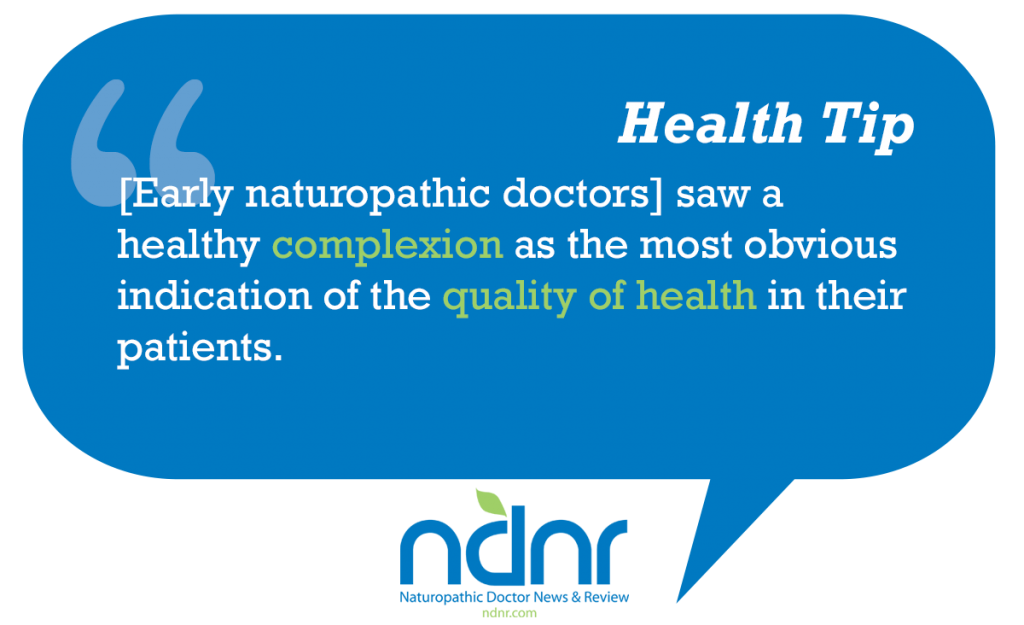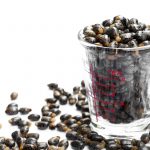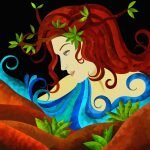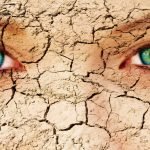Our Skin: Window on Health, or What the Elders Knew
Sussanna Czeranko, ND
There is nothing more beautiful or attractive than a skin glowing with the magnetism of health. Those who unfortunately do not possess it endeavor in vain to beautify their skin by using salves and ointments, not realizing that the seat of the trouble is internal and that they have to remove the cause, before they can expect the removal of the effect.
Benedict Lust (1929, p. 254)We should never allow ourselves to forget that the skin is an organ of sensation, respiration, absorption, excretion and stimulation, and that like every other organ in the body its health depends upon exercise of its several functions to a normal degree.
Dr. Pringle (De Quer, 1921)
The early naturopaths knew the miraculous, versatile, waterproof, self-regenerating power of the skin, the ultimate body garment that contains, protects, excretes and secretes. The early NDs knew that our average fifteen square feet of skin, cell layers, nerves and glands were a virtual window on our health and a barometer of everything inside. They valued the skin not only for its topographical diversity, protecting the body from nasty pathogens, but also for its astonishing diagnostic potential.
Those same early naturopathic doctors counted on the versatility, resilience and reliability of the skin as our window on health. They saw a healthy complexion as the most obvious indication of the quality of health in their patients. The skin was viewed as having many functions in the body and ignoring the skin was an invitation for trouble. Lust insisted, “Without a daily culture of the skin a lasting health is inconceivable.” (Lust, 1909, p. 238) It was not much of a mystery to our elders as to why we had problems with skin, nor were the remedies difficult to ascertain and administer. In fact, from the perspective of the early twentieth century ND, returning to nature and its healing elements of water, sun and air could bring complete resolution to skin disorders.
At the turn of the last century, Metcalfe, for example, described the skin as “a delicate integument, which envelops and protects the wonderful and complex organism … and in an adult it has an extent equivalent to about 15 square feet.” (Metcalfe, 1904, p. 275) Dr. Handshuh viewed the skin as much more than a simple protective covering of the body. The skin was “a living, sensitive, breathing, exhaling, absorbing, excreting, eliminating membrane.” (Handshuh, 1929, p. 456) Lust went further, saying that if ‘the culture of the skin’ was neglected, illness would “gradually [penetrate] into more tender organs, and generate diseases which in most cases are deadly.” (Lust, 1909, p. 239)
 Metcalfe contended that these 15 square feet of surface area had three primary functions: absorptive, secretive, and excretive. (Metcalfe, 1904, p. 276) The absorptive function permitted “medicaments, when rubbed into the skin, [to] produce their known effects the same as when introduced into the stomach or directly into the blood.” (Metcalfe, 1904, p. 276) He added, “the surface of the skin is studded over with an amazing number of minute pores, forming … the ducts of the sudoriforous glands and sebaceous follicles situated in or below the skin.” (Metcalfe, 1904, p. 276) He further described, “these little glandular organs [as] continually secreting and excreting fluids, the one watery, the other oily, which lubricate the surface and impart pliancy and softness to the skin. (Metcalfe, 1904, p. 276) With regards to this key function of the skin, Spitler reminds us: “keep in mind that the skin eliminates about as much water in a day as do the kidneys.” (Spitler, 1948, p. 39)
Metcalfe contended that these 15 square feet of surface area had three primary functions: absorptive, secretive, and excretive. (Metcalfe, 1904, p. 276) The absorptive function permitted “medicaments, when rubbed into the skin, [to] produce their known effects the same as when introduced into the stomach or directly into the blood.” (Metcalfe, 1904, p. 276) He added, “the surface of the skin is studded over with an amazing number of minute pores, forming … the ducts of the sudoriforous glands and sebaceous follicles situated in or below the skin.” (Metcalfe, 1904, p. 276) He further described, “these little glandular organs [as] continually secreting and excreting fluids, the one watery, the other oily, which lubricate the surface and impart pliancy and softness to the skin. (Metcalfe, 1904, p. 276) With regards to this key function of the skin, Spitler reminds us: “keep in mind that the skin eliminates about as much water in a day as do the kidneys.” (Spitler, 1948, p. 39)
Perspiration
Indeed, the chief excretion by the skin is perspiration which is “to move the gases from the interior of the body through the fine gland channels to the surface and there to discharge them.” (Lust, 1905, p. 65) Perspiration was divided into two types: “sensible perspiration which is excreted after severe exercise; and insensible perspiration, or transpiration, an invisible vapour which is continually being given off by the skin.” (Metcalfe, 1904, p. 276)
Modern naturopaths see the skin as an emunctory organ, a view also held by our elders. “As an excreting organ the skin is of great importance, seeing that about one-fifth of the whole excrementitious matter of our bodies is exuded through it.” (Metcalfe, 1904, p. 276) When healthy, sweat discharges organic and saline matter, and in disease conditions the discharge becomes poisonous. “All forms of skin eruptions, whether they be a simple case of hives, or a malignant carbuncle, may be regarded as an attempt on the part of nature to eliminate poisonous material from the system.” (Lust, 1927, p. 254) The inactivity of the skin resulted in the accumulation of morbid matter.
Lust lists the sources of poisons “due to scrofula, inherited syphilis, the systemic results of vaccination, an acid condition of the blood due to improper diet, or to toxemia from absorption of poisons in the intestinal canal.” (Lust, 1927, p. 254) Booth added to this list overeating, breathing vitiated air, and muscular inactivity contributing to poor skin. (Booth, 1914, p. 79) The skin’s role in removal of waste was emphasized repeatedly by the early doctors. It is no surprise to read that our elders considered “habitual constipation … fatal to a good complexion.” (Booth, 1914, p. 79)
Skin Vital for Depuration
In any case, as Metcalfe frequently pointed out during this period, “excretion is an all important depurating or purifying process; if the used up materials of the body are not duly removed from the blood and discharged from the system, they rapidly accumulate and act as the deadliest poisons and the worst consequences to health and life often result.” (Metcalfe, 1904, p. 277) Indeed, the elimination of toxins and waste matter “cause the many changes in the smell, the color, the taste, etc., of the perspiration of the sick person.” (Lust, 1904, p. 67) These observations of discolouration, and malodorous of towels used were often noted by hydrotherapists during treatments.
In the view of our early NDs, any suspension and cessation of secretions from the various excretory glands was indeed a cause for alarm. (Metcalfe, 1904, p. 277) When one organ system becomes diminished or arrested, another organ will overtake its duties until recovery occurs. This balance between skin and the kidneys was illustrated by Metcalfe: “the functions of the skin and kidney stand in so close a relationship that they often assume the place, … of each other, so that when the skin is impaired, the kidneys increase in activity, and vice versa.” (Metcalfe, 1904, p. 277) He adds, “in cases of disease of the renal functions, the skin relieves the kidneys of their duties, which is witnessed by the fact that the fluid eliminated contains some of the substances common to urine.” (Metcalfe, 1904, p. 277) In this temporary relationship, the “balance necessary for life is maintained” and is not sustainable permanently. The skin often partially or wholly relieves the lungs, kidneys, intestines and other internal excreting organs of their important duties.” (Metcalfe, 1904, p. 277)
We are very aware today too of the role of perspiration aiding temperature regulation of our bodies. An example is that of the renal and skin connection in hot weather as perspiration increases and urination decreases; in cold weather this is reversed. If perspiration is suppressed either partially or entirely, the whole body becomes affected. Nowhere is this more acute and possibly fatal than in a fever “causing death in a short time.” (Lust, 1905, p. 66) “In cases of abnormal heat [fever] increasing in our body, … we naturally try to reduce it by proper hydrotherapeutic means, namely by water application in the form of gushes, half-baths, wrappings, etc. We all know that, as soon as perspiration appears at the moment of the crisis, the danger of the acute illness is passed and the patient is on the road to recovery.” (Lust, 1905, p. 67)
The Jacket
The skin as a diagnostic terrain was highly valued by one of the most formidable water cure healers, Father Kneipp. So numerous and startling were his cures that in his Wörishofen church, he administered advice to 400 to 500 people each day. (London Daily Chronicle, 1897)
So important is the function of the skin and so clearly does it indicate the general condition of health, that Father Kneipp, the great water cure apostle, was always careful to examine the skin of his patients. If the ‘jacket’ as he termed it, seemed to be in good condition, he was always emphatic in predicting an early recovery. If the ‘jacket’ was dry and shriveled, lacking in tone and contractile power, he would invariably shake his head and inform the patient that much time and treatment might be necessary before health was restored in him.
The Full Bath
Bathing was the first step used by the early naturopaths as “a curative to the sick and a preventive of disease.” (Handshuh, 1929, p. 455) Taking regular baths was important in cleanliness, but more importantly to keep vital the actions that the skin’s pores served. The temperature of the water and duration of a bath were determined by such factors as age, sensitivity, ‘hardening’, and body composition.
Today, the temperature of bathing water that we choose is generally hot and definitely much warmer than waters used by our predecessors. “Under normal circumstances one ought never to bathe in water that is hotter than his blood, … and for most people whose vitality is not impaired, a bath from 85 to 90 is better still.” (De Quer, 1921, p. 582) We seem to have lost the capacity to endure cold baths. Hardening was embraced by Father Kneipp in his treatment plans. “By ‘hardening’ the constitution we mean making it capable of resistance, especially to cold, and of remaining unaffected by unfavorable weather. (Lust, 1905, p. 19)
Lust felt that “the best means of hardening the system [were] however, short, cold ablutions and baths of no longer than a minute’s duration.” (Lust, 1905, p. 19) The best treatment recommended was a full bath with swimming. The temperature of the water was between 65°–77°F and the duration was not to exceed 10 minutes. After swimming, the person is rubbed hard with dry flannels. (Lust, 1904, p. 73) “This [bath] produces a deep-red skin and a comfortable glow certainly takes the place of the previous shivering.” (Lust, 1904, p. 73) By using cold water, capillaries would contract “forcing the blood to the interior…” Baumgarten, a physician working in Father Kneipp’s Wörishofen water cure sanitarium in Germany, contended that “the reaction so much spoken of in the water cure [was] nothing more than a rush of blood to and from the inner organs which in coming to the skin gives it the peculiar red coloration.” (Baumgarten, 1903, pp. 124-125)
Lust assures his readers that after the fifth or sixth such bath, the unpleasant sensations would be replaced with “a comfortable feeling.” (Lust, 1904, p. 74) The number one commandment of Father Kneipp’s cold water treatments states that cold water is only used “if the body is warm.” (Bauergmund, 1908, p. 69) By using cold water, and plenty of friction with a coarse towel after each bath, the skin could remain active and healthy. In any case, we know that warm and cold water temperatures were highly prized by the early naturopaths. The habitual use of hot water caused skin atrophy resulting in the skin becoming “hypersensitive to cold and hyposensitive to heat.” (De Quer, 1921, p. 582)
For those unaccustomed to such low temperatures, Lust made adjustments to have a bath in waters 91°F-93°F. Directions for the bath required that the patient completely submerge in the water “the sole exception of the tip of his nose, rubs himself and lie down again. … After a couple of minutes gets out of the bath, takes some kind of exercise in the bathroom and gets into the water again, after having reduced the temperature by four degrees.” (Lust, 1904, p. 74)
In the words of a newly converted cold bather, Hashnu Hara in 1903 writes, “ I plunged with my eyes shut. I thought someone had knocked me over at first, but found my breath in a short time, and when I came out I was glowing.” (Hara, 1903, p. 207)
Friction and Rubbing
Rubbing and vigorous friction was an important aspect of the full bath, both during and after. Rubbing helped warm the body and aid circulation. “In bathing, most colds are contracted by exposing the bare body to the air before the bath, when the draught closes the pores. They should close in the water, and will speedily open again after it, as soon as the body is exercised.” (Lust, 1904, p. 75)
Animate the Limbs with Exercise
Exercise was also an essential part of the bathing formula. Baumgarten advised, “before any [cold water bath] make it your business to be thoroughly warm, and after the application also do not stand idle but exercise, or walk until normal warmth has again set in.” (Baumgarten, 1903, p. 126) Vigorous exercise also helped the “hardening and strengthening of the body.” (Lust, 1905, p. 20)
Most importantly, our elders advised that vigorous exercise and activity led to perspiration and the elimination of morbid matter. “The skin is the most important of all the organs liberating the body from superfluous matter.” (Lust, 1909, p. 238) Today, as our society lulls itself into sedentary states, other than an hour at the gym we do not expend much physical effort. A recent study identified that young people spend about 7 hours and 38 minutes consuming some form of entertainment media each day. (Kaiser Family Foundation, 2010) Adults fare no better as we lead sedentary lives in front of our computers, averaging about 2 hours at physical activity. Metcalfe counseled “the man who follows an employment entailing great physical exertion in the open air is rarely a diseased man. His labor excites the skin, and what would otherwise become poisonous and productive of disease is eliminated from the system.” (Metcalfe, 1904, p. 278)
Lust was not ambiguous about where to take baths. “A bath in the open air, especially in the sunshine is the most conducive to health.” (Lust, 1904, p. 74) “The fresh air in the country does not cost one cent …” Jaquemin (1908, p. 136) continues, “fresh air is the chief factor in … natural healing.” Lindlahr also was a strong proponent of the air bath and cold water baths and rubs. “The cold spray or sponge bath taken during exposure to the sun and air will increase skin action. Let the body dry in the air, rubbing it with the hands to increase its magnetism.” (Lindlahr, 1919 p. 21) Pringle recommends this kind of regimen daily. In view of the current frenzy of Vitamin D research and administrations of liquid sunshine, the advice of the early naturopaths exposing the skin to open air and sun seems prudent advice. “If I were to give the public advice I would say, expose the whole body to the air and sunlight at least once a day for a period of a few minutes, and once a week for an hour or more.” (De Quer, 1921, p. 583) The skin was considered an organ of respiration and “needs to breathe.” (Wallian, 1904, p. 77) The air baths were best “done after a cool bath, shower … and exposing the naked [body] to the air before dressing in the morning or before retiring at night.” (Wallian, 1904, p. 77)
The founders of our medicine believed deeply in the simple elements of water, air and earth as factors in well being and health care. They saw the skin as probably the most elegant of the body’s organs, recommending many natural therapies to sustain its health, utility and beauty. They recognized the unparalleled utility of the skin as diagnostic terrain, but also as a window on health and a catalyst aided by the right treatments for abundant health.
 Sussanna Czeranko, ND, BBE is a licensed naturopath in Ontario and Oregon. She is currently a faculty member in the Advancement Department at NCNM conducting historical research in its rare books room. She is applying these studies to the creation and delivery of an ongoing curriculum centered on nature cure, including balneotherapy and Buteyko, a Russian breathing therapy. She is a faculty member working as the rare books curator at National College of Natural Medicine. She is currently compiling several books based on the journals published by Benedict Lust. In addition to her work in balneotherapy, she is the founder of The Buteyko Academy, a training program for NDs to incorporate a scientific model of breathing therapy called Buteyko into their repertoire.
Sussanna Czeranko, ND, BBE is a licensed naturopath in Ontario and Oregon. She is currently a faculty member in the Advancement Department at NCNM conducting historical research in its rare books room. She is applying these studies to the creation and delivery of an ongoing curriculum centered on nature cure, including balneotherapy and Buteyko, a Russian breathing therapy. She is a faculty member working as the rare books curator at National College of Natural Medicine. She is currently compiling several books based on the journals published by Benedict Lust. In addition to her work in balneotherapy, she is the founder of The Buteyko Academy, a training program for NDs to incorporate a scientific model of breathing therapy called Buteyko into their repertoire.
References
Baumgarten, A. (1903). Water applications. The Naturopath and Herald of Health, 4(5). New York, NY: Benedict Lust Publishing.
Bauergmund, A. (1908). How should Kneipp’s treatment be taken? The Naturopath and Herald of Health, 9(3). New York, NY: Benedict Lust Publishing.
Booth, E. (1914). The value of a good complexion. The Naturopath and Herald of Health, 19(2). New York, NY: Benedict Lust Publishing.
De Quer, J. H. (1921). Doctor Pringle discusses the skin. The Naturopath and Herald of Health, 26(12). New York, NY: Benedict Lust Publishing. John De Quer was a patient of Dr. Pringle and wrote this article quoting Dr. Pringle’s view of the skin and its treatments.
Handshuh, M. L. (1929). Air and water. Nature’s Path. New York, NY: Benedict Lust Publishing.
Hara, H. O. (1903). On my table: The Kneipp cure. The Naturopath and Herald of Health, 4(7). New York, NY: Benedict Lust Publishing.
Jaquemin, T. (1908). Cold air and cold water. The Naturopath and Herald of Health, 9(5). New York, NY: Benedict Lust Publishing.
Kaiser Family Foundation. (January 20, 2010). Generation M2: Media in the Lives of 8- to 18-Year-Olds. Retrieved from http://www.kff.org/entmedia/mh012010pkg.cfm
Lindlahr, H. (1919). The Practice of Natural Therapeutics, 5th ed. Chicago, IL: The Lindlahr Publishing Co.
London Daily Chronicle (1897, May 22). Father Kneipp dead: A priest known throughout the world for his water cure passes away in Suabia.
Lust, B. (1904). Bathing and attention to the skin. The Naturopath and Herald of Health, 5(4). New York, NY: Benedict Lust Publishing.
Lust, B. (1905). Hardening. The Naturopath and Herald of Health, 6(1). New York, NY: Benedict Lust Publishing.
Lust, B. (1905). The importance of perspiration for the health. The Naturopath and Herald of Health, 6(1). New York, NY: Benedict Lust Publishing.
Lust, B. (1909). Culture of the skin as a curative. The Naturopath and Herald of Health, 14(4). New York, NY: Benedict Lust Publishing.
Lust, B. (1921). Beautifying the complexion. The Naturopath and Herald of Health, 26(3). New York, NY: Benedict Lust Publishing.
Lust, B. (1927). Ulcers, boils and skin diseases. Nature’s Path, 6. New York, NY: Benedict Lust Publishing.
Metcalfe, R. (1904). Essays and notes on hydrotherapeutics: The functions of the skin. The Naturopath and Herald of Health, 5(11). New York, NY: Benedict Lust Publishing.
Spitler, H. R. (1948). Basic naturopathy: A textbook. New York, NY: American Naturopathic Association.
Wallian S. S. (1904). Air-baths will make good blood. The Naturopath and Herald of Health, 5(4). New York, NY: Benedict Lust Publishing.










